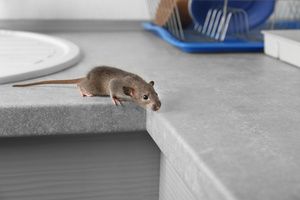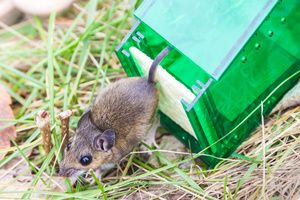When rats or mice invade a home, most people want them gone as soon as possible. Usually, killing rats and mice results in pain. This could be quick, but it frequently lasts for several hours, days, or even weeks in the case of some toxins. These lethal techniques don’t provide a long-term answer, however, and many homeowners prefer to try human mice extermination methods.
Getting rid of a single mouse or rat won’t be effective, if you don’t find out how they entered your home and take measures to prevent more from coming in. Here are a few easy and humane mice extermination tips to help you get rid of any unwanted critters and stop others from infesting your home in the future.
Deterrence and Prevention

Rats and mice, like all other animals, need food and a place to live, and they’ll look for both in places that are simple to get to. Mice can enter your house by squeezing through incredibly small openings, such as air vents and spaces around gas and water pipes.
Swift action must be taken as soon as a mouse or rat issue is discovered. Find the food source that lured them and get rid of it. Animals should be humanely removed, and entryways should subsequently be sealed to prevent further entry.
Seal Openings and Remove Food Sources
Mice only require a small amount of food each day-about one-tenth of an ounce-in the form of crumbs. Clean all nooks and crannies where crumbs and food might have fallen, like the toaster and the sides of the stove and refrigerator.
Food that attracts rodents, such as cereal, crackers, bread, pasta, and chocolate, should be stored in cabinets in metal or glass containers. Dry cat and dog food bags should also be kept in rodent-proof storage containers. Never leave dog or cat food out overnight in dishes.
Use wire wool, “mouse mesh” (available online), or a powerful sealant that will quickly harden to seal all potential access points. Use plastic or rubber fillers instead of caulk because mice can easily nibble through them. Please be aware that plug-in ultrasonic equipment is unreliable.
Place rags in the corners of sheds, cellars, or attics after soaking them in a non-toxic insect repellent solution (available online or at certain hardware and DIY stores). Along beams and other places where rats congregate, apply peppermint, spearmint, or eucalyptus oil.
Clean Up the Garden

If you feed birds in your garden, be sure to use feeders with trays beneath and avoid hanging them close to your home or trees. Don’t leave unconsumed foods on the ground overnight; instead, put food out sparingly. Trim shrubs, eliminate cover like wood piles, keep grass short, and clear the area of clutter.
If you know where the mice are traveling to and from, expose the tunnels and cover the entrances and exits with debris, like pebbles and leaves, to cause an annoyance and block the hole. Burrows can also include cat litter, which motivate the mice to move.
You can also cultivate citronella, mint, or spearmint plants in your yard as a natural deterrent. Although garden centers and DIY stores provide animal-repellent products, it is definitely not a good idea to use them if you have a pet cat or dog. Cat litter that has been soaked in urine is also effective as a deterrent.
Catch and Release
If you can’t get the animals to go on their own, the only option left is to capture them and release them away from the house.
If you really need to take urgent action, either buy a humane trap (which is obtainable in some DIY/garden centers and hardware stores) or use the following instructions to make a homemade one. Regardless of the type of trap you employ, it must be inspected first thing in the morning, the last thing at night, and at least once more throughout the day before the animal is released.

A small, 28 cm-deep plastic or metal trash container filled with some shredded paper as well as some food, like peanut butter, should be placed where mice have been spotted. Do not use cheese. Use a book to cover the entire top of the bin, leaving a 2 cm space on one side. Create a “staircase” out of a stack of newspapers next to the trash can so that mice may climb up and see through the opening. They should drop to the ground to get the food when they smell it, falling on the shredded paper, which softens their fall and gives them a sense of security during their captivity.
Released mice should be placed as far away from the house as possible, in the garden, dense vegetation like hedges, or close to a shed where they can find cover.
Contact a Professional Today
Spartan Animal & Pest Control has been offering humane removal and control services to homeowners and their families in New Bedford, MA since 2012 to promote comfort and improve their quality of life. It is our responsibility to minimize damage and remove trespassers from your home when a wild animal enters it or it is overrun with pests. Reach out to us for more information or to get scheduled for an inspection.



